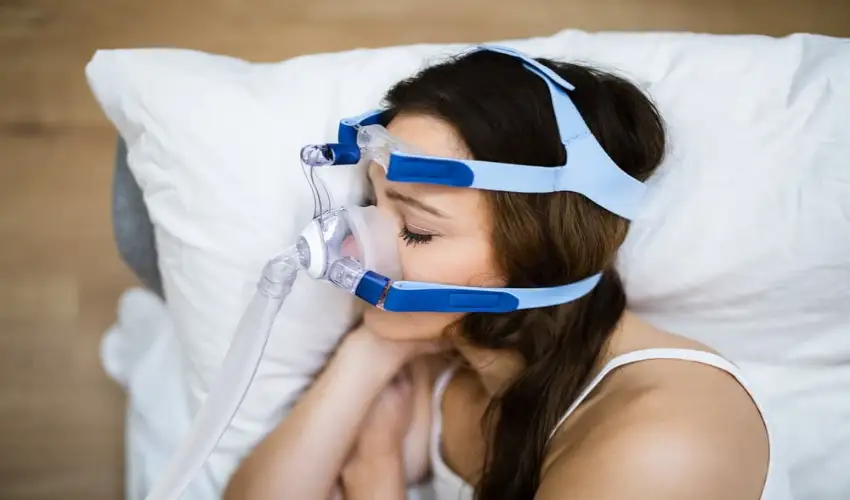Sleep apnea machines, often referred to as CPAP (Continuous Positive Airway Pressure) devices, play a vital role in improving sleep quality and overall health for individuals with sleep apnea. These machines work nightly to keep your airways open, reducing snoring and helping you get restful sleep. However, to ensure your sleep apnea machine functions properly and lasts longer, regular maintenance is essential. Proper cleaning, timely part replacements, and correct storage not only extend the life of the device but also protect your health from harmful bacteria, mold, and allergens.
In this article, we’ll guide you through practical tips on how to maintain your sleep apnea machine properly.
Why Maintenance Is Important
Your 睡眠呼吸機 delivers air directly to your airways through tubing and a mask. Because of this, moisture and oils from your breath can accumulate inside the machine’s components. If not cleaned or maintained, this buildup can create an environment where bacteria and mold thrive. Poorly maintained machines can lead to respiratory infections, skin irritation, and reduced therapy effectiveness. Regular maintenance ensures:
- Consistent airflow performance
- Better hygiene and reduced risk of illness
- Extended equipment lifespan
- Comfort during therapy
Daily Maintenance Tips
- Clean Your Mask Cushion
The mask cushion directly touches your face, so it easily collects oils, sweat, and dirt. Wash it daily with mild soap and warm water. Avoid using harsh chemicals or scented soaps as they can damage the material or cause irritation. Air-dry it thoroughly before use.
- Empty and Rinse the Humidifier Chamber
If your CPAP machine has a humidifier, empty the water chamber every morning. Rinse it with warm water to prevent mineral deposits and bacteria growth. Always use distilled water instead of tap water to avoid mineral buildup.
- Check the Tubing
Quickly inspect the tubing for visible moisture or condensation. Hang it up to air-dry if needed. Excess water inside the tubing can lead to mold growth and block airflow.
Weekly Maintenance Steps
- Deep Clean the Mask, Tubing, and Humidifier
At least once a week, wash the mask, tubing, and humidifier chamber in warm, soapy water. Rinse them thoroughly and let them air-dry on a clean surface. Avoid direct sunlight, as it can damage the silicone or plastic parts.
- Wipe Down the Machine
Unplug your CPAP machine and gently wipe the exterior with a damp cloth. This helps remove dust and keeps the machine looking clean.
- Inspect the Filter
Most machines come with a disposable or reusable filter. Check the filter weekly for dust buildup. Reusable filters can be rinsed with water and air-dried, while disposable filters should be replaced regularly based on the manufacturer’s instructions.
Monthly and Periodic Maintenance
- Replace Filters
Filters are essential for keeping dust, allergens, and bacteria out of your machine. Replace disposable filters at least once a month or as recommended. A clogged filter reduces machine efficiency and can affect your therapy.
- Replace Mask Cushions and Headgear
Mask cushions lose their seal over time due to wear and skin oils. Replace cushions every 1–3 months to maintain proper fit and prevent air leaks. Headgear may need replacement every 6 months if it becomes loose.
- Check Humidifier Chamber
Over time, even with distilled water, the humidifier chamber may show signs of discoloration or cracks. Replace it if it no longer seals properly or becomes cloudy.
- Annual Machine Checkup
Schedule an annual inspection with your healthcare provider or equipment supplier. They can check the motor, pressure settings, and overall functionality to ensure your therapy remains effective.
Storage and Handling Tips
- Keep it dust-free: Store your CPAP machine in a clean, dry place. Avoid keeping it on the floor where it may collect dust.
- Avoid extreme temperatures: Do not leave your machine in hot or freezing environments, such as cars.
- Travel care: Use a travel case to protect your machine from dirt, damage, and moisture when you are on the go.
Common Mistakes to Avoid
- Using tap water in the humidifier – This can cause mineral buildup and damage the chamber.
- Skipping daily cleaning – Even missing a few days can allow bacteria to grow.
- Not replacing filters – Dirty filters can reduce airflow and affect machine performance.
- Using harsh cleaning products – Chemicals like bleach or alcohol can damage the equipment and cause irritation.
Final Thoughts
Maintaining your sleep apnea machine properly is not just about keeping the device in good condition—it’s also about protecting your health and ensuring your therapy works effectively. By following a simple routine of daily cleaning, weekly deep cleaning, and timely replacements, you can maximize the performance of your CPAP machine and enjoy better sleep every night.
